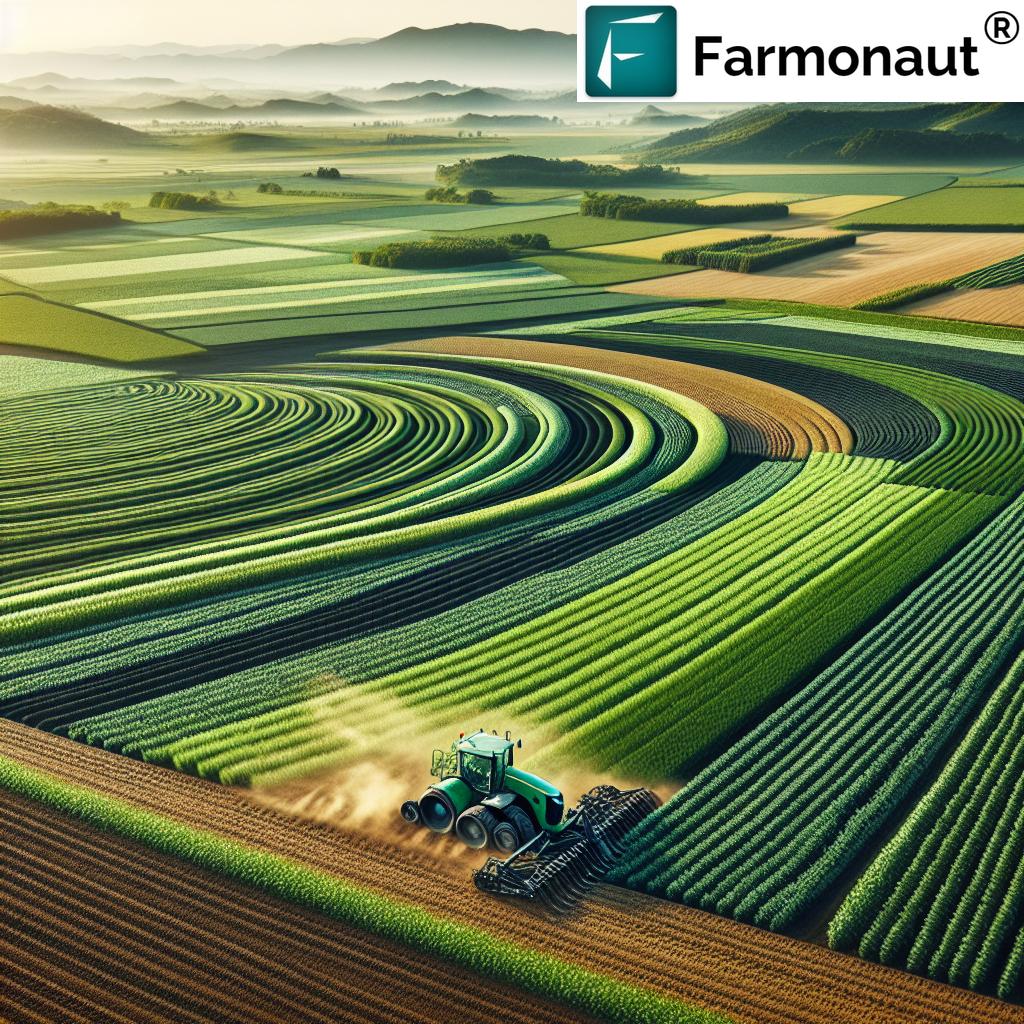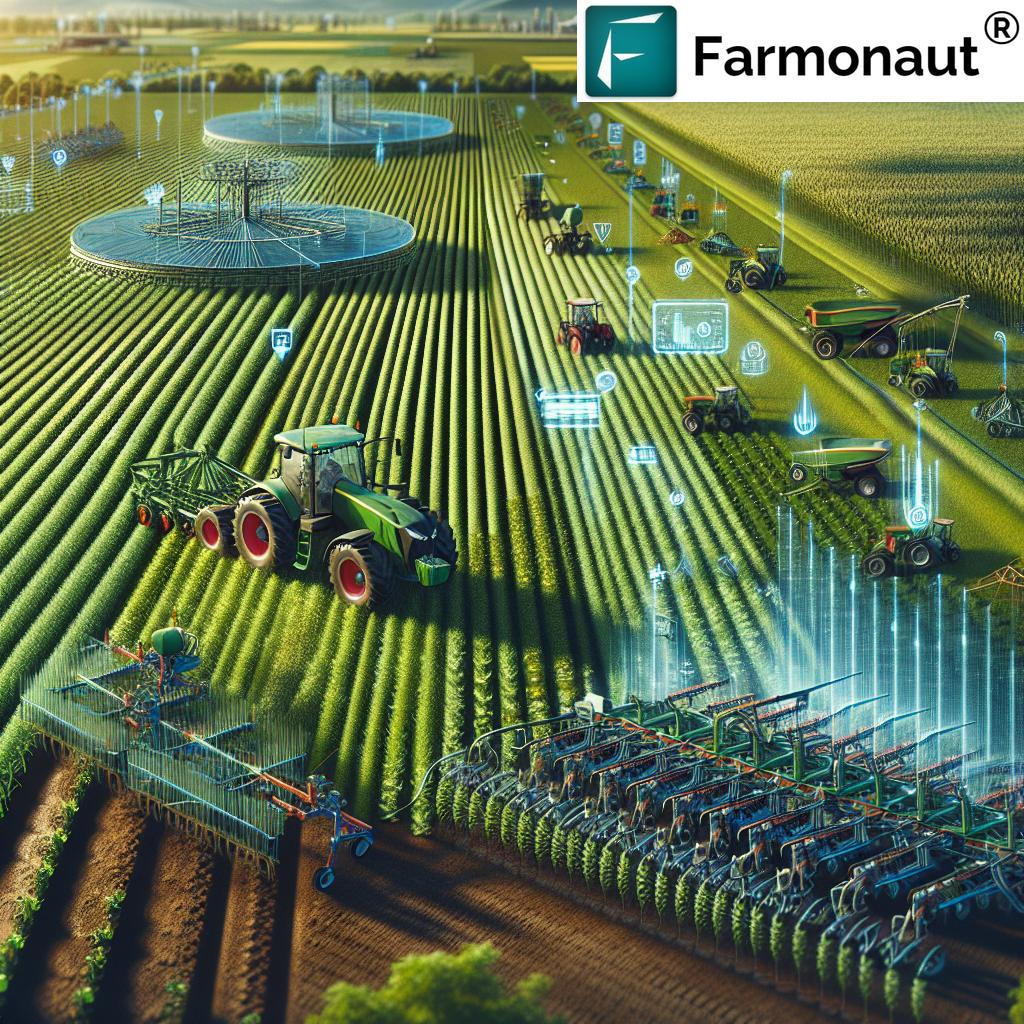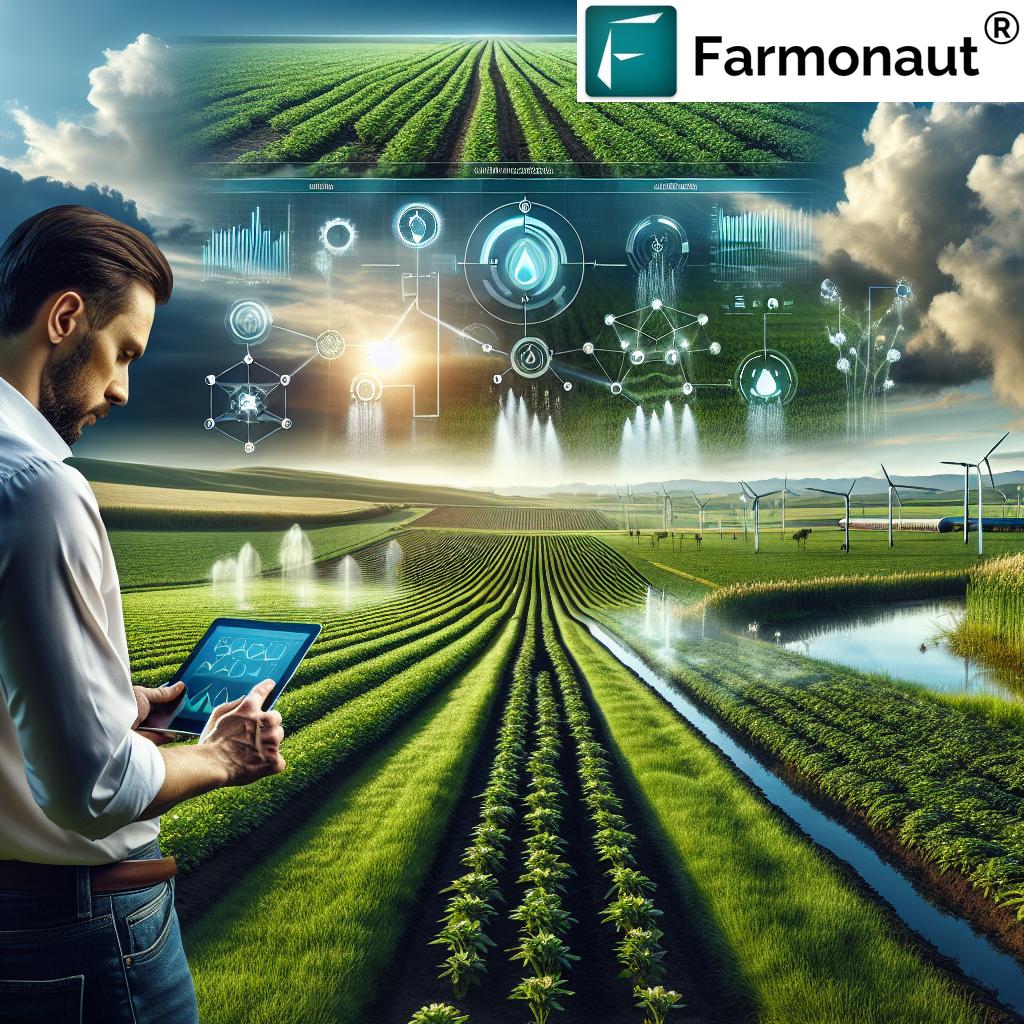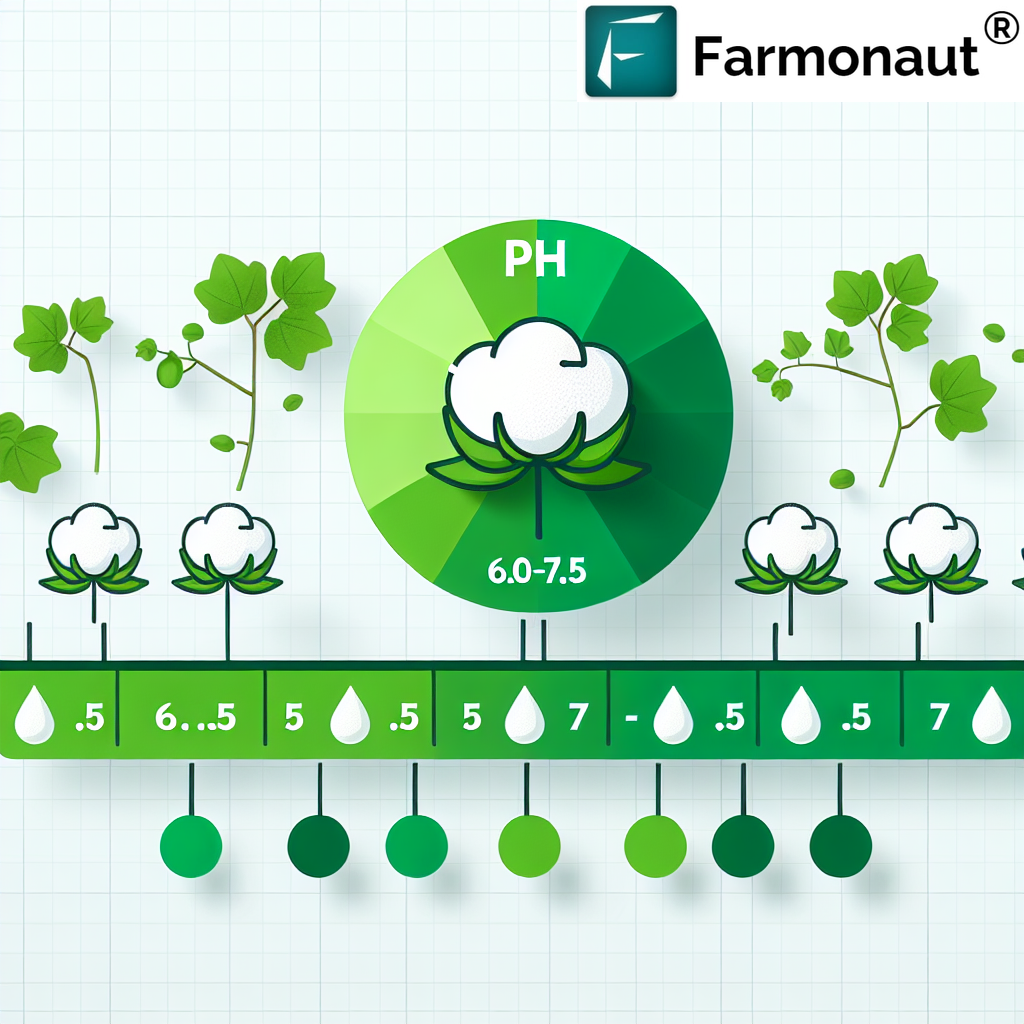Internet of Farming: Smart Data in Agriculture 2025
“By 2025, over 75 million IoT devices will be deployed in agriculture, enabling real-time data collection and analysis.”
The Internet of Farming (IoF) is rapidly emerging as the transformative force reshaping agriculture and forestry worldwide. With the world facing increasing population growth, climate change, and mounting resource constraints, the traditional methods of producing food are under immense pressure. By 2025, the integration of digital technologies such as IoT, AI, satellite imaging, and connectivity infrastructure is poised to revolutionize how crops are grown, livestock is managed, and forests are conserved.
This article explores how internet of farming, IoT, and AI are providing data-driven insights, enabling precision management, and promoting sustainable practices in the agricultural sector. From real-time monitoring and automated systems to cloud platforms and blockchain-based transparency, we cover the technologies, benefits, and challenges propelling internet agriculture in 2025—and how new solutions are ensuring food security as the world changes.
What is the Internet of Farming?
The Internet of Farming (IoF)—also known as internet farming, internet for farming, internet agriculture, or internet in agriculture—is the application of internet-based technologies and digital connectivity within agricultural practices.
- IoF combines IoT (Internet of Things), cloud computing, artificial intelligence (AI), machine learning, big data analytics, and wireless connectivity.
- Farming equipment, sensors, drones, satellites, and even the farmers themselves are connected via networked platforms, enabling seamless data flow.
- Data is collected, analyzed, and acted on in real time to optimize yields, reduce inputs, minimize losses, and adapt rapidly to changing environmental conditions.
Unlike traditional manual agriculture, which often relies on season-based routines and experience, the internet in agriculture provides a digital infrastructure for automating feedback, accessing real-time insights, and executing **precision actions** at the field, crop, or animal level.
AI-powered drones for precision crop monitoring & pest detection, as of 2025.
Core Components Driving Internet Farming
The internet of farming leverages a suite of interconnected platforms and tools. Below, we break down these core technologies catalyzing change across agriculture, forestry, and rural communities worldwide:
1. IoT Sensors & Devices
IoT sensors monitor soil moisture, temperature, nutrient levels, humidity, plant health, and animal biometric data directly in the field. These devices provide granular, location-based measurements that power dynamic interventions throughout the growing season.
- Soil sensors enable efficient irrigation and fertilizer application.
- Livestock wearables track animal health, reproductive cycles, and movement patterns to ensure well-being and productivity.
- Weather stations gather localized forecast data on rainfall, heat stress, and wind.
2. Drones & Satellite Imaging
Drones and satellite technology produce high-resolution imagery of crops, fields, and forests. These smart devices help detect issues early, such as disease outbreaks, nutrient deficiencies, or water stress. Their utility includes:
- Mapping plant health via normalized difference vegetation index (NDVI).
- Spotting pest infestations before damage spreads.
- Optimizing chemical applications with precise location data.
- Tracking reforestation efforts and forest health over time (Forest Advisory Tools).
Explore how satellite monitoring and AI-powered advisory systems shape farm management in 2025.
3. Cloud Computing & Data Platforms
Cloud-based platforms store, process, and visualize agricultural data. They make resources, operational metrics, weather, and advisory content accessible to farmers in real time from anywhere—via mobile, browser, or downloadable Apps.
For instance, our  Farmonaut web and mobile apps integrate satellite and sensor data to optimize decisions and resource allocation on the go.
Farmonaut web and mobile apps integrate satellite and sensor data to optimize decisions and resource allocation on the go.
Additionally, APIs and developer integrations make advanced data-driven insights available within third-party agri-management or fintech platforms. Learn more about Farmonaut’s Satellite & Weather API and check out the API documentation to build custom solutions for your farm management or advisory needs.
4. Artificial Intelligence (AI) & Machine Learning
AI & ML models analyze the data generated by IoT systems and satellite imagery. This results in:
- Intelligent recommendations for fertilizer scheduling, irrigation timing, and early pest/disease detection.
- Yield prediction and risk analysis, helping farmers anticipate fluctuations in climate, demand, and market pricing.
- Automated decision-making for autonomous farming machinery and variable rate input applications.
Notably, our Jeevn AI Advisory System utilizes satellite-based data and machine learning to generate actionable insights and expert guidance directly to the mobile devices of growers worldwide.
Discover how AI and precision tech are boosting harvests and sustainability through the internet of farming.
5. Autonomous Machinery & Robotics
Internet-connected tractors, harvesters, drones, and irrigation systems can operate semi-autonomously or fully autonomously. GPS and IoT connectivity enable precision planting, seeding, pest spraying, and harvesting, all while reducing errors and labor costs.
6. Mobile & Web Interfaces
Simple, user-friendly mobile applications and web dashboards allow farmers and agribusinesses to monitor operations, receive alerts, and make actionable decisions. Even farmers with little technical background can benefit from the digital revolution in agriculture by accessing:
- Crop health maps
- Weather forecasts
- Automated reports
- Resource optimization tips and more
Download the Farmonaut app for mobile or web and explore satellite-based crop health monitoring, AI-powered advisory, and farm management dashboards, no matter your location.
Applications of the Internet in Agriculture and Forestry
The internet for farming covers an ever-expanding array of smart, sustainable technology applications in fields, forests, and supply chains. As we approach 2025, here are some pivotal uses poised to reshape the sector:
Satellite crop health monitoring brings precision, early warning, and data-driven strategies to fields worldwide.
1. Precision Crop Farming
With internet farming platforms, precision agriculture becomes mainstream. Farmers utilize IoT soil and weather sensors alongside satellite imagery to customize fertilizer, irrigation, and pest control exactly as needed—down to the square meter. For example:
- Variable rate technology (VRT): Connected equipment applies inputs in the precise amounts required by different field zones, avoiding overuse and reducing environmental impact.
- Smart input savings: Monitor moisture and nutrient status to apply only what’s truly needed—improving yields and lowering costs.
2. Livestock Health Monitoring & Management
Wearable IoT tags and smart cameras track animal health, movement, feeding patterns, weight, and even mood in real time. Early alerts about illness or stress let us intervene before issues escalate, and automated feeding, watering, and milking systems improve welfare and efficiency.
3. Smart Irrigation Systems
Water scarcity is a critical concern for both farming and forestry. Internet-linked irrigation controllers analyze soil moisture, rainfall forecasts, and crop water demand models to precisely apply water only where and when it’s needed. This can mean up to 50% water savings while safeguarding yields.
Satellite-powered web applications simplify smart farm and field management for a global audience.
4. Supply Chain Transparency & Traceability
Today’s consumers and supply chain partners demand proof of origin and ethical practices. The internet in agriculture leverages IoT, blockchain, and APIs to trace each batch of crops or livestock through every stage, from field to store. This transparency reduces fraud, prevents losses, and can earn premium market prices.
With Farmonaut’s blockchain-based traceability solution, enterprises and cooperatives ensure product authenticity and consumer trust for sectors like food, textiles, and forestry.
5. Forestry Management & Environmental Conservation
The internet for forestry management deploys sensor networks, satellites, and drones to:
- Monitor forest health and canopy cover dynamically
- Detect illegal logging or encroachment early
- Map carbon sequestration and biodiversity to ensure sustainable land stewardship
- Deploy drones for reforestation efforts in remote or degraded areas
Explore our carbon footprinting service for organizations aiming to measure and mitigate their environmental impact while enabling compliance and biodiversity protection.
Learn more about satellite-based forest advisory and conservation on our Forest Advisory Solutions page.
“AI-powered systems are projected to increase crop yield prediction accuracy by up to 30% in smart farming by 2025.”
Satellites, geotagging, and AI combine for next-level farm oversight and transparency in 2025.
6. Farm Management, Resource Planning & Automation
Cloud and app-based solutions today enable:
- Centralized fleet management of tractors, harvesters, and support vehicles—Farmonaut’s Fleet Management system is designed to enhance safety, reduce operational costs, and optimize machinery usage across large farm enterprises.
- Carbon emissions tracking powered by our satellite and data-driven carbon footprinting tool for sustainability auditing
- Insurance and crop loan support via Farmonaut’s satellite verification service, streamlining bank and insurance processes for both lenders and farmers
7. Real-Time Advisory & Weather Forecasts
Data-driven AI platforms like our Jeevn AI system deliver actionable weather predictions, disease risk warnings, irrigation schedules, and yield forecasts. Instant access empowers farmers to maximize efficiency, reduce resource wastage, and respond proactively.
Precision soil moisture mapping minimizes irrigation needs and maximizes sustainable water management.
Comparative Features & Impact Table 2025
| Technology | Main Function | Estimated Data Precision (2025) | Example Use Case | Sustainability Benefit |
|---|---|---|---|---|
| IoT Sensors | Real-time field & livestock monitoring (soil, water, health) | Sensors: ±2% for soil moisture, ±1°C for temp | Trigger irrigation when moisture drops, animal health alerts | Reduction of irrigation water by 30–50%; early loss prevention |
| AI Platforms | Predictive analytics for yield, disease, & input optimization | Pest detection & yield prediction >95% accuracy | Crop yield risk forecasting, disease anticipation | Optimizes chemical/fertilizer; reduces resource usage & runoff |
| Satellite Monitoring | Large-scale crop & forest health, soil moisture, vegetation maps | NDVI detection: ~92% accuracy (daily, every 3–5 days) | Detect drought, growth stress, illegal forest clearing | Early problem mitigation, biodiversity & carbon monitoring |
| Agricultural Drones | Aerial scouting, precision spraying, canopy analytics | Visual/pest detection: 85–97% | Spot spraying, targeted fertilization, pest monitoring | Reduces input by up to 70%; maximizes target efficiency |
| Automated Machinery | Autonomous seeding, weeding, harvesting, data logging | Operational accuracy >98% (GPS-/IoT-controlled) | Self-guiding tractors for variable rate fertilization | Lower labor input; fuel/chemical usage down 10–30% |
Satellite-based smart data for crop health and soil analysis: enabling true digital decision-making.
Benefits of Internet Farming
The internet in agriculture provides a broad spectrum of economic, environmental, and operational benefits that address the biggest challenges in the sector:
- Increased Productivity: Data-driven decisions and automation boost yields per hectare and livestock output without increasing land use or external inputs.
- Resource Efficiency: Precision monitoring and application technologies save water, fertilizer, energy, and labor, minimizing cost and environmental impact.
- Risk Mitigation: Early detection of pests, diseases, or climate anomalies allows for rapid intervention, reducing catastrophic losses.
- Labor Savings: Automation and remote management reduce reliance on manual labor as farm populations decline in rural areas globally.
- Sustainability: Smart resource use supports biodiversity, improves soil health, and fosters climate resilience—key Sustainable Development Goals.
- Market Access & Competitiveness: Digital documentation and traceability enable compliance with regulations and access to premium/export markets.
Challenges and Barriers to Adoption
While the promise is vast, significant barriers must be overcome for widespread, equitable adoption of internet agriculture globally in 2025:
- Digital Divide: Many smallholder farmers in developing rural regions still struggle with access to reliable internet, affordable devices, or digital education.
- High Initial Costs: Investment in advanced IoT, drone hardware, and cloud subscriptions may be prohibitive without financial support or government incentives.
- Data Security & Privacy: Sensitive farm data faces risk of cyberattack or misuse unless robust cybersecurity and privacy frameworks are enforced.
- Interoperability & Standardization: The lack of common standards can fragment platforms, requiring seamless integration for full system value.
- Rural Connectivity Infrastructure: Many remote areas lack stable network coverage to enable the real-time, cloud-based agricultural management envisioned by IoF.
Future Outlook: Internet Farming in 2025 and Beyond
With each passing year, internet farming moves from an optional enhancement to a core necessity for food security, climate adaptation, and sustainable practices. By 2025 and beyond:
- Continued advances in 5G/6G, edge computing, cloud, and AI will drive smarter devices and deeper integration.
- Digital agricultural ecosystems will connect farmers, agronomists, suppliers, and consumers into seamless value chains—delivering collaborative platforms for innovation and resource sharing.
- Government and global policy makers are prioritizing internet-enabled agriculture to meet the UN’s Sustainable Development Goals and national food security targets.
- Biodiversity and environmental monitoring in forestry—powered by satellites and sensors—will be essential for managing deforestation, reforestation, and carbon sequestration as climate action intensifies.
- Big Data, AI, and automation will further minimize manual intervention while maximizing productivity and sustainability—even in regions facing labor shortages.
The fusion of data, technology, and old-world wisdom is fundamentally redefining our approach to producing and conserving the resources that feed and sustain our planet.
Farmonaut: Precision Agriculture for Everyone
At Farmonaut, we are committed to democratizing smart farming for every user—be it an individual farmer, large agribusiness, or government agency. We combine satellite imaging, AI, blockchain, traceability, fleet, and resource management tools in an affordable, accessible platform.
- Satellite-Based Crop Health: We interpret multispectral images to reveal crop/vegetation health, soil moisture, and risks, enabling proactive resource management.
- AI Advisory: Our Jeevn AI delivers personalized, satellite-based recommendations, weather forecasts, and expert strategies.
- Blockchain Traceability: Empowering farmers and enterprises with end-to-end food/product authentication.
- Resource & Fleet Management: Covering everything from vehicle optimization to carbon emission tracking and regulatory compliance.
Explore our Large-Scale Farm Management solutions – unify all monitoring, compliance, and advisory workflows on one intuitive dashboard.
Monitor and reduce your farm’s or forestry operation’s emissions with our carbon footprinting tool for a more sustainable 2025.
For seamless integration into banking, insurance, commodities, or research platforms, consult our API documentation.
Streamline crop loan and insurance approvals with satellite-based verification and reduce fraud in agri-finance processes.
Our Android and iOS apps bring the full power of satellite AI monitoring and advisory to your pocket, anywhere in the world.
Farmonaut’s blockchain traceability solution is designed for companies and cooperatives looking to enhance supply chain transparency across food, fiber, and forestry sectors, ensuring compliance, trust, and premium market access.
FAQ: Internet of Farming 2025
-
What is the Internet of Farming?
The internet of farming (IoF) is the interconnected network of smart devices, IoT sensors, cloud computing, artificial intelligence, and automated machinery applied to agriculture, forestry, and related activities to collect and analyze data for superior decision-making.
-
How does precision agriculture use IoT and AI?
IoT devices measure in-field variables in real time and relay this data to cloud-based AI tools, which process the information to generate precise recommendations—be it irrigation schedules or early pest detection notifications, ensuring optimum yields and input savings.
-
What are the biggest benefits of internet agriculture for farmers?
- Higher yields due to actionable data & early alerts
- Reduced input and labor costs
- Custom advice on weather, pest, and fertilizer management
- Improved sustainability and regulatory compliance
-
What role does satellite technology play in smart farming?
Satellite imagery provides a big-picture, high-frequency perspective on crop health, soil moisture, drought, and vegetation stress across large and remote areas—crucial for early intervention and sustainable management.
-
Is internet farming sustainable?
Yes, by enabling precision input use, early risk detection, resource conservation, and carbon tracking, internet agriculture supports climate action, waste reduction, and biodiversity protection.
-
What solutions does Farmonaut offer for 2025 smart agriculture?
- Satellite-based crop/soil health monitoring
- AI-driven advisory and weather tools
- Blockchain-based traceability for food & fiber products
- Fleet/resource/carbon management platforms for farms, forestry, and enterprises
All accessible from web or mobile app and API for global users.
Conclusion
The internet of farming is not a distant vision—it’s the practical, digital evolution of agriculture and forestry that’s urgently needed to address our global food, climate, and resource challenges. By 2025, technologies like IoT, AI, cloud computing, satellite imaging, and blockchain will drive the shift from intuition to data-driven decisions in every rural region and sector.
For sustainable and equitable adoption, closing the digital divide, improving infrastructure, interoperability, affordability, and ensuring strong data privacy must remain top priorities for all stakeholders.
At Farmonaut, we are dedicated to delivering access to affordable, precision agriculture solutions that combine satellite, AI, and blockchain—empowering farmers, agribusinesses, and policy makers to thrive in a smart, sustainable, and food-secure future.
Join us to lead the revolution in internet farming, shaping a smarter, greener, and more resilient agriculture for 2025 and beyond.












